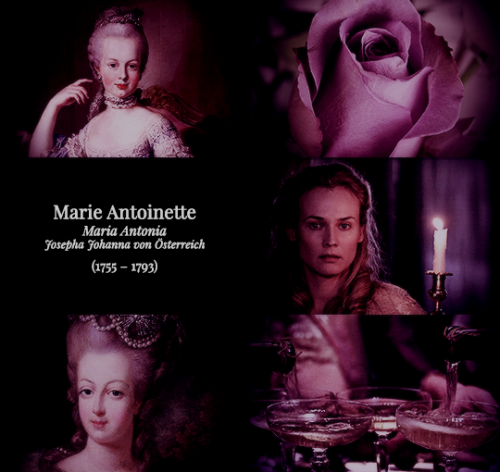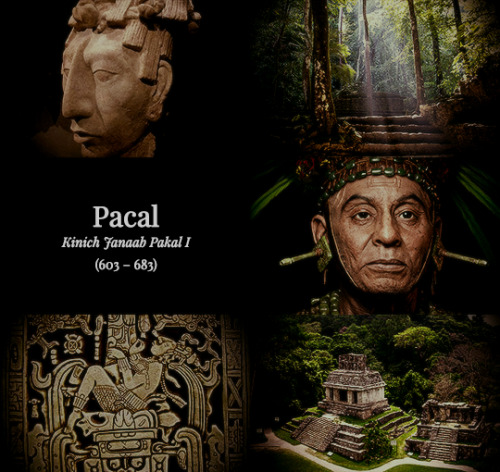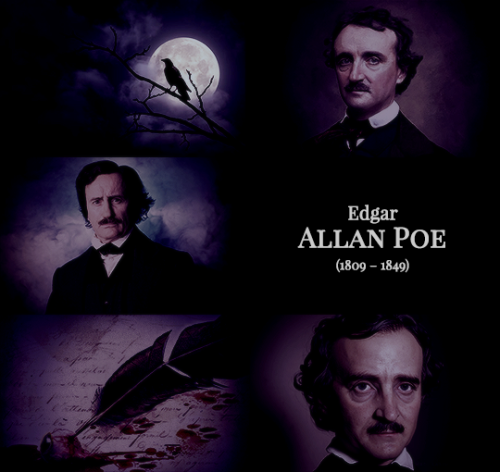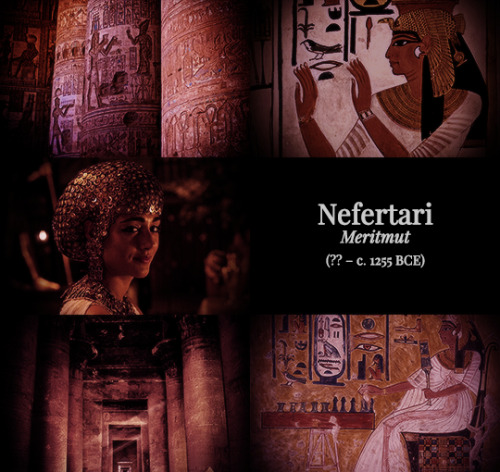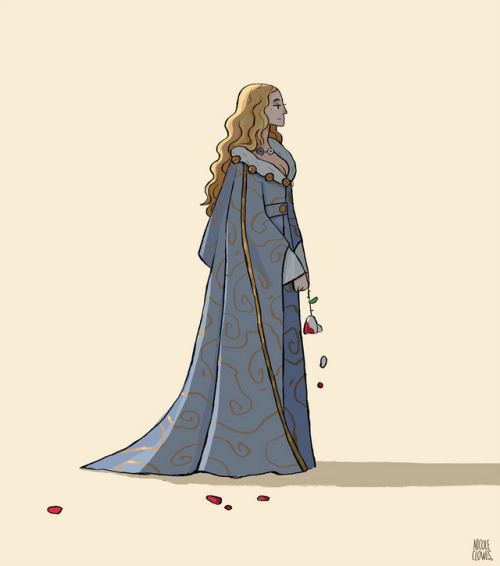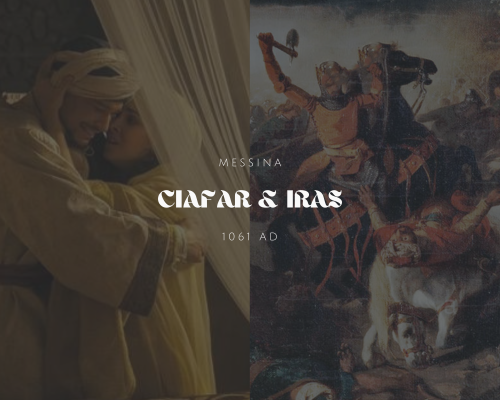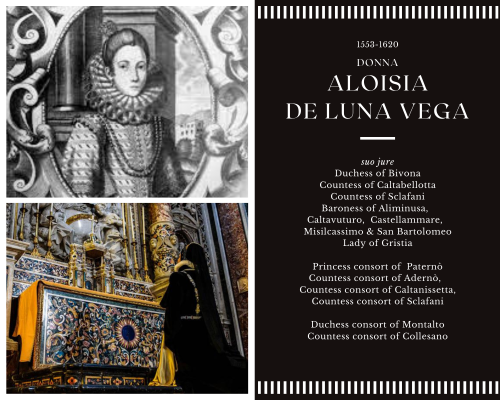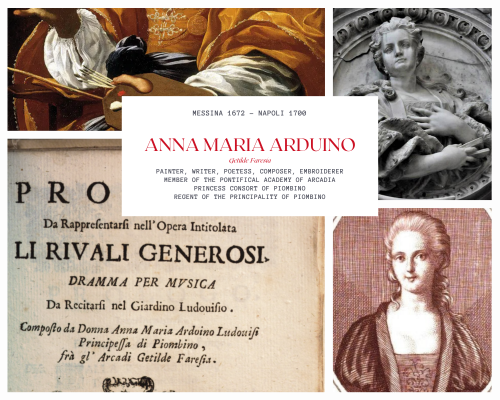#historyedit
The Ladies♔Princesses → Isabella Stewart, Duchess of Brittany (1426 - c.1495/99)
Isabella of Scotland was born in 1426 as the second child and daughter of James I and Joan Beaufort. Although there is no details of her childhood, a report before her marriage describes her as being “a well-brought-up young lady, schooled to silence and submission.” By the age of sixteen she married Francis I, Duke of Brittany in front of Bretons and Scottish nobles on 30th October 1442. The marriage appears to have been cordial and the couple had two daughters. In 1450 Francis died and Isabella was pressured by her younger brother James II to return to Scotland, where he had hoped to arrange a second marriage for her. However, Isabella refused, claiming that she was happy and popular in Brittany; along with being too frail to travel. It was more than forty years later, when Isabella died as early as 1495 and as late as 1499, and lived long enough to see the reign of her grandnephew James IV. She was either buried in Nantes or Vannes.
“In both piety and patronages, she could be matched by others in her world. Her life is of interest, nevertheless, because it provides precious evidence of the tastes of one particular woman, shaped by current fashion in devotion. Beneath the splendid trappings and ceremonial routine appropriate for her rank, Isabella attempted an internal pilgrimage as a private soul, a day by day progress on a path to spiritual enlightenment.” — Elizabeth Ewan and Maureen M. Meikle (editors), Women in Scotland c.1100 - c.1750
Post link
A portrait of Joan Beaufort, Queen of Scots by an unknown artist.
Jane, d. 1445. Queen of James I; daughter of John Beaufort, Duke of Somerset
Gallery: Scottish National Portrait Gallery (Print Room)
Date created: Published 1798
Post link
ALFRED THE GREAT // ÆLFRED OF WESSEX
born in 849 to Æthelwulf (King of Wessex) and Osburh (the first wife of Æthelwulf). He became King of Wessex on April 23rd, 871 shortly after his brother Æthelred died. As king, Alfred the Great defended his kingdom from the Vikings that attempted to take over Wessex and by the time of his death, he was the dominant ruler of England. Alfred is one of the only two English monarchs who were given the epithet “the Great” (which was given by writers in the sixteenth century) and he was the first to style himself as “King of the Anglo-Saxons.”
Alfred is said to have been a devout Christian and a pious leader. He promoted English rather than Latin so that the translations he had commissioned would be viewed as untainted by late Roman Catholics with influences from the Normans. Alfred was described as a learned and merciful man with a gracious and level-headed nature. He also encouraged education in his kingdom, as well as improving the legal system, military structure and the quality of his people’s lives.
While his biographer was Bishop Asser (who Alfred commissioned) did emphasize the more positive aspects and didn’t dwell on any of the ruthlessness that any King during that time would have, later historians also reinforced his favorable image. In 1441, Henry VI attempted to have Alfred the Great canonized as a saint. The attempt failed but some Catholics do regard him as a saint, the Anglican Communion regards him as a Christian hero (with a feast day on October 26th). And he his often found depicted in the stained glasses in Church of England parish churches.
Throughout his life, Alfred the Great suffered through a painful illness. And while his death, which occurred on October 26th, 899 was due to unknown causes, his illness may very well have been the cause. Due to the detailed account in Bishop Asser’s biography of the late King, many modern doctors have given possible diagnoses. It’s mostly believed that he suffered from Crohn’s disease (a type of inflammatory bowel disease) or haemorrhoidal disease (Hemorrhoids).
Alfred the Great was originally (but temporarily) buried in the Old Minster in Winchester. Four years after his death, he moved to the New Minster (which may have been built for him). When the New Minster moved to Hyde in 1100, the monks and Alfred’s body (and those presumably of his wife and children) were transferred to Hyde Abbey. During Henry VIII’s reign, in 1539 the church was demolished (but the graves were left intact). In 1788, while a prison was being constructed by convicts, the graves were probably rediscovered. Coffins were stripped of lead and the bones were scattered and/or lost. The prison was then demolished between 1846 and 1850. And excavations in 1866 and 1897 were inconclusive. In 1866, an amateur antiquarian named John Mellor recovered somes from the site and claimed they were King Alfred’s. They then went to a vicar of the nearby St. Bartholomew’s Church and were buried in an unmarked grave. In 1999, an archaeological excavation uncovered a second pit in front of where the high alter would have been. The dig uncovered foundations of the abbey buildings and some bones (which at the time suggested they were Alfred but were later proved to belong to an elderly woman).
In 2013, the Diocese of Winchester exhumed the bones from the unmarked grave at St. Bartholomew’s and put them in a secure storage. They were radiocarbon dated which told them that the bones were from the 1300′s, meaning they aren’t Alfred’s. However, in January 2014, a fragment of a pelvis bone from the 1999 dig was also radiocarbon dated and has been suggested that it either belongs to Alfred or his son Edward the Elder. But it still remains unproven.
Post link
AMERICA’S FIRST SERIAL KILLER // H. H. Holmes (Herman Webster Mudgett);
born in Gilmanton, New Hampshire, Holmes was the third child to two devout Methodist parents. Holmes excelled in school which often made him the target of ridicule. When he was still young, he had a fear of doctors, which when the bullies found out, they decided to force him to stand face to face with a human skeleton and even put the skeleton’s hands on his face. After that, Holmes was cured of his fear and became fascinated with death and even picked up dissecting animals as a hobby. His fascination didn’t end there, in 1882, he enrolled in the University of Michigan’s Department of Medicine and Surgery. During his time as a student, he would steal cadavers from the lab, disfigure the bodies and then claim they were victims of an accidental killing in order to collect insurance money from policies that he took out on the deceased. It was around then he abandoned his wife and son. He also changed his name to Holmes, possibly to avoid previous scams from catching up with him.
In 1887, he married Myrta Belknap in Minneapolis, Minnesota while still married to his previous wife Clara (since 1878). He fathered a daughter with Myrtha in Englewood, Illinois. Holmes, his second wife and his daughter lived in Wilmette, Illinois together but he spent most of his time in Chicago, tending to business. In 1894, Holmes married Georgiana Toke in Denver, Colorado while still married to both Clara and Myrta. He also was reported to have a relationship with Julie Smythe, wife of on of his former employees and one of his future victims.
In 1886, Holmes began working in a drug store in Chicago. After the owner of the drugstore died, Holmes offered to buy the store from his former boss’s wife, she agreed and sold it to him. He also purchased a lot across the street and began work on the three story, block long World’s Fair Hotel which was nicknamed The Castle (and then later, The Murder Castle). The hotel was opened to be used as an inn for the World’s Columbian Exposition in 1893. The ground floor contained Holmes’ relocated drug store and various other shops while the second and third floor was a maze of windowless rooms, stairs leading to nowhere and doors that opened to brick walls. The true intent of the Castle was for murder. In order to keep anyone knowing the full floor plans, Holmes constantly fired contractors and hired new ones; letting them each only build a small part of the hotel. At the time of the opening, Holmes made all of his employees sign up for life insurance, he paid their premiums and in return, he was listed as beneficiary. His victims were mostly female employees, hotel guests and lovers.
There were a variety of torture rooms in the hotel; some were lynching rooms, some had iron walls with blow torches installed to incinerate his victims, some had gas leaking in them to asphyxiate his victims at any time. The victims bodies were then dropped down a chute to the basement where some were stripped down and made into skeleton models and then sold to medical schools.
Eventually he left Chicago, reappearing in Fort Worth, Texas, where he began to create another murder castle, only to give up halfway through. But in 1894, Holmes was briefly arrested for a horse swindle. While in jail, he struck up a conversation with a convicted train robber about his plans to fake his own death to collect insurance money. The train robber directed Holmes to a trustworthy lawyer sot hat the plan could be carried out in exchange for $500. But ultimately it failed when the insurance company became suspicious and refused to pay. Instead of pressing the claim, Holmes came up with a new, similar idea. This time he would fake the death of his criminal friend, Benjamin Pitezel. Pitezel agreed to fake his death so his wife could collect $10,000 in life insurance, which would then be split between him, Holmes and the lawyer. Pitezel was supposed to get a life insurance policy under the name of B. F. Perry, an inventor. And then he was supposed to “die” in a lab explosion. Holmes’ job was to find a body that could pass as Pitezel’s. Instead, Holmes killed Pitezel by knocking him out with chloroform and then setting his body on fire. After which, Holmes convinced Pitezel’s unsuspecting wife to give him custody of three of their children (all of which he would later kill).
The downfall of Holmes came when the train robber tipped off police about Holmes because he never received his payment. His murder spree ended in Boston on Nov.17, 1894. It was around that when a former janitor of the Castle told police how he was never allowed to clean the second floor, which led to an investigation of the hotel. They uncovered Holmes’ torture rooms, a pile of human bones, a dissection table covered in dry bloods, balls of women’s hair, women’s bloody clothing, and lime pits of skeleton remains of his victims. Holmes’ victims count is anywhere between 20 to 200. He first confessed to 100 killings but later changed it to 27 for unknown reasons. Though he also claimed he was innocent at one point and then later claimed that he was possessed by Satan. However, the eventual finding of the three murdered Pitezel children were what sealed Holmes’ fate.
On May 7, 1896, H. H. Holmes was hanged at Moyamensing Prison for the murder of Benjamin Pitezel. Up until his death, he remained calm and amiable and showed very little signs of having any fear, anxiety or depression. However, he did ask that his coffin be contained in cement and buried 10 feet deep because he was concerned that grave robbers would steal his body and dissect him. Holmes’ death was not an easy one. His neck did not snap and instead he slowly strangled to death for 15 minutes. He wasn’t pronounced dead until 20 minutes after the trap had been sprung.
In August 1895, the Murder Castle was mysteriously burned down to the ground. Some believe it was to cover up any remaining evidence that had yet been found by police while others believed it was outraged citizens wanting to rid their city of the horrible place and keep it from becoming a tourist attraction. The site is currently the Englewood Branch of the United States Postal Services.
Post link
FIRST OF THE MEDICI POLITICAL DYNASTY // LAST SCION OF THE HOUSE OF MEDICI
Cosimo di Giovanni de’ Medici; Pater Patriae (”Father of his Country”)
akaCosimo the Elder andCosimo Pater Patriae (Latin for ‘father of the nation’). Lord of Florence. Born in Florence, inherited welth and expertise in banking from his father. Married Contessina de’ Bardi. Had three children; Piero di Cosimo de’ Medici “the Gouty”, Giovanni de’ Medici and Carlo di Cosimo de’ Medici (illegitimate with a slave woman named Maddalena). He was a great patron of literature, the arts and architecture. He was succeeded by his son Piero on his death.
Anna Maria Luisa de’ Medici; Her Serene Highness The Dowager Electress [Palatine of the Rhine]
Electress Palatine; Duchess of Neuburg, Jülich and Berg, of Cham and the Upper Palatinate; Countess of Mege. Only daughter of Cosimo III de’ Medici, Grand Duke of Tuscany and Marguerite Louise d'Orléans. She was a patron of the arts and musicians. Married to Johann Wilhelm, Elector Palatine, who had syphilis, therefore they never had children. Her siblings were barren which left the family almost extinct at that point. After her brother Gian Gastone died, all of the Medici’s allodial possessions (including £2,000,000 liquid cash, a vast art collection and robes of state and lands in the former Duchy of Urbino) were bestowed upon Anna. The most notable act that she passed was the Patto di Famiglia (”Family Pact”). Signed on October 31, 1737 and in collaboration with the Holy Roman Emperor and Francis of Lorraine, she will all the Medici’s personal property (all of art and treasures collected by the family for nearly 300 years) to the Tuscan state, provided that none of it was ever removed from Florence.
Post link
HUEY “THE KINGFISH” LONG DIED // Sept. 10th, 1935
after being shot two days earlier, Huey Long died in Baton Rogue, Louisiana; a month after he announced his plans to run for the president.
On the day of the shooting, Long was at the State Capitol building, trying to push out Judge Benjamin Henry Pavy with a re-redistricting plan (”House Bill Number One”). It was Long’s top priority sense the passing of the bill would remove Pavy from the bench. The session that would determine whether or not the bill would be passed was going on all day, even until 9 p.m. Throughout the day, Dr. Carl Weiss (Pavy’s son-in-law) was trying to get a moment alone with Long so that they could speak. But Long and his body guards brushed him off each time while passing in the hallway.
At 9:20 p.m., shortly after the house finally passed the bill that Long had wanted so much, Weiss approached the Senator for the final time. The generally accepted version of what happened in the hall of the Old Statue Capitol building is that when Weiss approached Long, he got into four feet from him and then shot him in the abdomen once with a handgun. After the shot was fired, Long’s bodyguards began firing their own guns are Weiss, shooting him a total of 62 times.
Long was rushed to the hospital and died two days later at 4:10 a.m. His last words are reported to be, “God, don’t let me die. I have so much to do.” LSU historian, T. Harry Williams has suggested that Long could have possibly survived with better medical care. but Edgar Hall (who was among those that were called to treat Long’s wound) denies that his death was a result of medical or surgical incompetence.
In a 2014 documentary about the event called 61 Bullets, directed by Louisiana Kreutz and David Modigliani, questions whether or not Dr. Carl Weiss actually murdered Huey Long. While the documentary debates Weiss’ innocence in the case, historians do not accept the theory that Long actually died as a result of accidentally being hit by one of the bullets fired by his own bodyguards. However, a historical plaque adjacent to the Old State Capitol grounds, at the site of Dr. Carl Weiss’ home reads, “alleged assassin.”
Post link
THE KINGFISH // Huey P. Long, Jr.
the 40th Governor of Louisiana (1928 - 1932) and a member of the United States Senate (1932 - 1935) was a member of the Democratic party who had announced his plans for presidency a month before he was assassinated in the Old State Capitol building in Baton Rogue, Louisiana. Long was an outspoken politician seeking to represent the interests of ordinary people. He denounced the rich and the banks and called for people to “Share the Wealth.”
His Share Our Wealth program was created in 1934 with the motto of “Every Man a King.” The program proposed a new wealth redistribution in the form of a net asset tax (a wealth tax) on corporations and individuals in order to curb poverty and homelessness that was an endemic on the nation during the Great Depression. Long also advocated federal spending on public works, schools and colleges and old age pensions to stimulate the economy.
Free higher education and vocational training, pensions for the elderly, veterans benefits, health care and a yearly salary (enough for a house, car and other ordinary conveniences) for all families that earned less than 1/3 of the national average income were things he also advocated for. Later, he proposed a debt moratorium to give struggling families extra time to pay their mortgages and various other debts without losing their property to creditors.
In 1928, the roads of Louisiana were hardly maintained (out of the 300 miles of paved roads, only 60 miles were kept up by the state). The poor state of the roads made it difficult for many of the rural citizens of Louisiana to get to school, work and hospitals. Long’s administration implemented a road-building program that employed 22,000 men. Four years later, there were 9,700 miles of newly paved and gravel roads and 111 bridges, which doubled the size of the state’s highway system. The new roads lowered the cost of doing business and saved the average driver more than $118 per year (an average of $1,400 in today’s standards) in gasoline and maintenance.
The bridges that were built during the road-building programs helped the average farmer out by allowing them to drive over the waterways that Louisiana was mostly made up of instead of taking a ferry, saving them $150 per year ($1,800 by today’s standards). The bridges also helped cut down on travel time, making a trip that usually took days only take a few hours.
He also initiated the construction of public hospitals and schools in Louisiana, tripled the size of Louisiana State University by building new department facilities and a modern football stadium, and a new medical school. He believed education was in everyone’s birthright, restructured the tax system to give the state the financial burden of education instead the poor families and parishes. He also pushed for a bill that would provide free textbooks to every student in Louisiana, which increased school enrollment instantly by 20%. His initiatives provided free busing so that all students would be able to attend school. He also established adult vocational schools and night classes; which taught 100,000 of the 230,000 illiterate adults in the state how to read.
Long created a network of public hospitals that would be accessible to the poor. He expanded the stater’s two Charity Hospitals to create the network. The expansion allowed the capacity of New Orleans’ Charity Hospital to double and reduced the death rate by 30%. He modernized and expanded the state’s hospitals and institutions by adding new treatment rooms, sterilizing equipment, abolishing the practice of chaining patients to chairs in plow stocks and provided modern therapy and dental care. Long’s administration also built institutions for mentally disabled children and epileptics. He tripled funding for public healthcare through the Board of Health, expanding the 10 free health care clinics to 31 by 1933 and provided free immunizations to 67% of the rural population.
Post link
HISTORY MEME: [2/9] KINGS/QUEENS: Anne Boleyn
Anne Boleyn (c. 1501 – 19 May 1536) was Queen of England from 1533 to 1536 as the second wife of King Henry VIII, and Marquess of Pembroke in her own right. Henry’s marriage to Anne, and her subsequent execution by beheading, made her a key figure in the political and religious upheaval that was the start of the English Reformation. [more]
Post link
HISTORY MEME: [1/9] KINGS/QUEENS: Cleopatra
» Cleopatra VII Philopator (69 – August 12, 30 BC), known to history simply as Cleopatra, was the last active pharaoh of Ptolemaic Egypt, briefly survived as pharaoh by her son Caesarion. After her reign, Egypt became a province of the recently established Roman Empire. [more]
Post link
Nancy Drew Posthumous Characters||Real Historical Figures
Marie Antoinette
My specialty is Marie Antoinette. Poor Marie. The most misunderstood queen of the 18th century. Marie used to visit the very tower that now belongs to this castle. I’m convinced that this place holds evidence that will forever change the way the world views Marie.Harry Houdini
Did you ever hear about a challenge that J.J. Thompson issued to Harry Houdini back in 1925? J.J. put up a big reward for this Houdini challenge. He must’ve thought the escape was impossible. But Houdini did it and J.J. didn’t have the reward money. From what I can tell, J.J had to give Harry Houdini fifty percent of the theater as the reward.Pacal
This is one of the museum’s most treasured pieces, a carving of King Pacal. Pacal assumed the throne at the age of twelve — can you imagine? That was 615 AD. He ruled for 68 years, at the height of the Maya civilization.Oliver Cromwell
Oliver Cromwell? Ironsides? Hmph. I supposed they don’t teach history any longer in the US. Lady Penvellyn was a rather vocal critics of Cromwell’s policies and helped many of his enemies flee the country.Abraham Lincoln
See, what I didn’t tell you when I gave you that letter that Jake wrote to Ruth is that I also found his diary. Which is how I found out that he’d gotten to be friends with President Lincoln and that he’d gotten a letter from Abe that he knew would be so valuable someday that he always kept it on his person.Edgar Allan Poe
“Is that an old manuscript?”“By Edgar Allan Poe. Never published. He told her where it was when he was on his death bed. When he died, she took it and run off so Rufus Griswold wouldn’t end up with it. At least, that’s I think that’s what happened.”
Brothers Grimm
It was here at university where the brothers’ interest in collecting folk and fairy tales was first piqued. While traveling in France as a research assistant for one of the professors, Jakob became fascinated by a German manuscript of old stories he had found. Interested in keeping the tales and the culture alive, Jakob and Wilhelm began their search for other such tales. The brothers solicited help from their friends, as well as trips to the surrounding countryside, in order to obtain as many tales as possible. A large majority of the tales came from female acquaintances, such as Dorothea Wild and the Hassenpflug sisters, Amalie and Jeanette.Nefertari
“Ah, a love story. Break out the tissue papyrus, because when I’m done there won’t be a dry Horus in the house. Look it up, dear. Ramses II and Nefertari shared a love so cast the world could scarcely contain it. I’m talking about the kind of love you spell capital L, capital O, heart instead of a V, capital E. They stood side by side and ruled the world. But as they saw the years stretch out before them, they were keenly aware that a handful of decades would never cut it. They needed to be together, always.”“That’s … sweet.”
“And relevant. The ancient Egyptians believed that life was little more than a dress rehearsal for eternity.”
Nikola Tesla
Nikola Tesla was a genius, visionary, and inventor who left an indelible mark on the world. With 700 patents to his name, Tesla broke new ground in research and design to usher in a second industrial revolution. Many of today’s technologies are based on Tesla’s designs.John Hathorne
You stand before the remains of Salem’s most zealous, and conniving judge. So lacking in morals was Judge Hathorne, that he sentenced innocents to death while claiming the estates of the dead as his own. Unlike the remorseful Judge Sewall, Hathorne never felt any guilt for his part in the Salem witch trials.
Post link


«Princess Louise…she combined inexpressible charm and grace with restraint and tact, quite rare at the age of fourteen. In all her actions, the result of her mother’s worries, both respected and beloved, was visible. Her mind, soft and delicate, grasped with extreme rapidity everything that could decorate it, like a bee that knows how to get honey from the most poisonous plants. Her conversation reflected the freshness of her youth, and to this she added a great correctness of concepts.»
© Countess Varvara Nikolaevna Golovina about princess Louise of Baden, future Russian Empress Elizabeth Alexeievna.
After sending the ships back so that none of his men would be able to seek refuge in them, he went to attack Messina. Finding it undefended—for its defenders had been killed as a result of Roger’s earlier attack—he [Roger I d’Hauteville] captured the city and stormed its towers and ramparts, killing all those whom he found within, except those who managed to flee to the Palermitan ships. This occurred in the year of the Incarnation of the Lord 106[1].
Among those who tried to flee was a certain youth, one of the most noble among the citizens of Messina, who had a very beautiful sister whom he tried to take with him as he fled. But the girl, a slight young woman, weak by nature and unaccustomed to such effort, began to lose heart out of fear and the unaccustomed difficulty of their course. The brother tenderly encouraged her to flee, but when his words had no effect and he saw that she was physically exhausted, he fell upon her with his own sword and killed her so that she would not have to live among the Normans and be corrupted by any of them. Although he was steeped in tears—his sister being so sweet and his only one—he chose to become her murderer and to mourn her death rather than to have her become a prevaricator of their law and be defiled by someone who did not live according to it.”
Goffredo Malaterra,The Deeds Of Count Roger Of Calabria And Sicily And Of His Brother Duke Robert Guiscard,p.91
Folklore gave a name to these unfortunate and unnamed siblings:CiafarandIras. It also provided them of a background. According to tradition they were the children of an alleged Emir of Córdoba, who found themselves admist the chaos of the Norman conquest of Sicily. If they really existed and that was their name and story, we won’t ever know.
Post link
And yet Heaven’s providential intervention stepped in; since the still free mind of Prince Don Cesare couldn’t grasp a greater gift was yet to come. And this bird-catcher fooled by hope, instead of an escaped dove, managed to catch a Phoenyx. This was indeed Donna Luisa di Luna e Vega, daughter of Pietro Duke of Bivona, who by marrying Don Cesare, not only brought to her husband’s House her father’s Duchy, and the lands of the House of Peralta, already englobed by those of de Luna’s, but then with the marriages of her son and grandson, poured in the Moncada’s possessions, the titles and riches of two other illustrious lineages, that of Aragona and Cardona, with the Duchy of Montalto and the County of Collesano.
Hence, like that Arabian bird, which it is obsequiously followed by other birds wherever it flies, likewise she brought with her a magnificent procession of many estates in the House where she nested.
Giovanni Agostino della Lengueglia, Ritratti della prosapia et heroi Moncadi nella Sicilia: opera historica-encomiastica,p.559-560 [my translation]
Aloisia (or Luisa) was born in Bivona (nearby Agrigento) around 1553. She was the firstborn of Pietro Giulio de Luna Salviati, Duke of Bivona, Earl of Caltabellotta and of Sclafani, and his first wife, the Spanish Doña Isabel de Vega y Osório. The baby girl was named after her paternal grandmother, Luisa Salviati de’ Medici. In fact, through her father, Aloisia descended from Lorenzo il Magnifico de’ Medici, who was her great-great-grandfather. On her mother’s side, on the other hand, she was the granddaughter of Juan de Vega y Enriquez, who had been Viceroy of Navarre and later of Sicily (also the one who brought Jesuits in Sicily). Aloisia had two younger sisters, Bianca and Eleonora, and a half-brother, Giovanni, born in 1563, out of Pietro’s second marriage to Ángela de la Cerda y Manuel, daughter of Juan de la Cerda, IV Duke of Medinaceli and Viceroy of Sicily from 1557 to 1564.
In 1568, Aloisia married Cesare Moncada Pignatelli, Prince of Paternò, Earl of Adernò and of Caltanissetta, a decade older than her, in Caltabellotta. The union between the two had been planned by Juan de la Cerda, the bride’s step-grandfather. Cesare was indeed supposed to marry his cousin, Giovanna de Marinis (daughter of his aunt Stefania), but marriages between noble families were delicate matters and needed the Viceroy’s approval as well as (sometimes) the Papal dispensation in case of seventh grade parentage. The Moncadas were an incredibly wealthy and noble family. They owed their fortune mainly to Guglielmo Raimondo Moncada Earl of Agosta who, in 1379, had kidnapped Queen Maria I of Sicily and brought her to Spain where she married her cousin Martino. To thank him for his support, King Pedro IV of Aragon (the Queen’s maternal grandfather) had named Guglielmo Raimondo Royal Counselor and Justiciar of the Kingdom of Sicily. From 1565, the Moncadas were able to add to their titles that of Princes of Paternò, plus managed to exchange Augusta for Caltanissetta, thus saving tons of money since Augusta, differently from Caltanissetta, was a maritime city, which was often the victim of pirates’ raidings and needed to be constantly defenced (which entailed great expenses). De la Cerda used his influence to mess up the Moncadas’ original wedding plans (angering thus the groom’s family) and proposed the union with the de Luna, with whom the Moncadas were distantly related and therefore had needed the Pope’s blessing.
Aloisia would give birth to two children: Isabella (who would die an infant) and Francesco (ca. 1569-1592). Her marital life would be cut short as Cesare would suddenly die in Paternò on July 30th 1571, after only three years of marriage.
Little Francesco, now Francesco II, would be officially appointed of his late father’s titles the following year and placed under the guardianship of his maternal grandfather, Pietro de Luna, and his paternal uncle, Fabrizio Moncada (first husband of famous portrait painter Sofonisba Anguissola). Seven years later, Fabrizio would die in a pirate attack off the coast near Capri and some would talk about it not being an accident and about rumours of Fabrizio being headed to Spain to denounce his sister-in-law’s meddlings in the management of the Moncada’s patrimony.
Gossipers aside, it’s documented Aloisia took personal care in the education of her son and short-lived daughter. She began Francesco to study law, philosophy, literature and maths, as well as more artistic subjects like painting and sculpting.
Aloisia was the one who actively ruled over her son’s lands, showing a great deal of resourcefulness and managerial skills. Holding steady in her mind the idea of strengthening her (and by result her son’s) position, on September 17th, 1577, in Monreale, she married Antonio d’Aragona Cardona, Duke of Montalto and himself a widower. By concession of the Viceroy Marcantonio II Colonna, Aloisia obtained to keep acting as her son’s guardian without having to cede the role to her new husband or someone else.
Antonio d’Aragona too belonged to a prominent family, being a grandson of Ferrante d’Aragona Guardato, founder of the Line of the Dukes of Montalto and illegitimate child of Ferdinando I of Naples. Antonio’s first wife had been María de la Cerda y Manuel de Portugal, daughter of Juan de la Cerda y Silva, 4th Duke of Medinaceli as well as a Grandee of Spain, Viceroy of Sicily and Viceroy of Navarre during his long political career. From his first marriage, only his daughter Maria had reached adulthood as little Ferdinando died as an infant.
Aloisia bore Antonio a daughter, Bianca Antonia, who would later marry Giuseppe Ventimiglia Ventimiglia, II Prince of Castelbuono and IX Marquis of Geraci, and be the mother of Francesco III Ventimiglia d’Aragona, who would be offered (but not accept) the Crown of the Kingdom of Sicily during the anti-Spanish revolt of 1647.
The Duke of Montalto died in Naples on February 8th, 1584, on the route to quell a riot in the Flanders (the so called Dutch War of Independence) by virtue of his role of Captain General of the Spanish Cavalry in the Flanders. Leaving no male heir, all his titles and possessions passed to his eldest daughter, Maria.
Aloisia didn’t lose time to grieve for her husband as she swiftly arranged the marriage between her son Francesco and her step-daughter, the new Duchess of Montalto. The wedding took place on March 12th 1585 and the following year Francesco received maritali nomine the endowment of the Duchy of Montalto the Earldom of Collesano and all the lands owned by his wife’s family, bringing the total to thirteen of the fiefs owned by the Moncada.
On August 1592, Aloisia’s half-brother, Giovanni died childless, so as his eldest sister and heir, on September 30th she was endowed of the baronies of Scillato and Regaleali. She also inherited many fiefs in the area of Caltavuturo and Sclafani. From her court in Caltanissetta, she kept cleverly administering her possessions as well as the lands acquired through both of her late husbands (she generally rented her lands to foreigners, mostly Genoese and Pisans). She invited the Jesuits in Caltanissetta, had many churches and religious centre of the area built, she restored the city’s Cathedral. Aloisia took particular interest in having the Moncada’s libri di famiglia (books used to register one family’s commercial activity as well as key events in the lives of its family members, particularly common from XIII to XVI century) perfectly catalogued and maintained. She introduced and commissioned many artists and was perhaps the one who called back her sister-in-law Sofonisba Anguissola who, at that time, lived in Genova with her second husband, and who starting 1615 returned in Sicily where she would die.
Those who visited her, were rendered almost speechless about the magnificence of her court. During a visit in 1598 of the Viceroy and Vicereine, Bernardino de Cárdenas y Portugal and his wife Luisa Manrique de Lara, the Duchess had, in that occasion, surpassed herself. Aloisia had, in fact, arranged the area where she would receive her guests (at her own expenses), the forest of Mimiani, so perfectly and with so many tents, one would have thought you were in an actual city. Her guests were so pleased, the Vicereine gifted her of a splint of the Holy Cross kept in a display case ornated by precious stones.
Aloisia was also particularly generous. She did a lot of charity (and passed on the same generous disposition to her son and grandson), but made it through the nuns, ordering them to keep quiet about her being the one who sent the money, so that people would rather thank the Heaven for the celestial gift. She must have thought that public displays of charity didn’t have as an aim to help people, but rather that some benefactors did it for themselves since they took pleasure to hear their names be acclaimed for their generosity. During a terrible famine, when poor people were so hungry they ate grass and pasture, she used her personal income to provide for her people, so that at that time in her lands mortality rate was very low. She was also particularly mindful to guarantee that poor girls wouldn’t find themselves forced by misery to undertake a dishonourable life, granting them means to do honourable marriages. On the other hand, the Duchess didn’t skirt from regularly sending generous gifts to ministers and potentates, so that when at the right time, she could count on their support.
On May 23rd, 1592, a 23 year-old Francesco II Moncada died of malaria in Adernò (nearby Catania). Although it must have been extremely heartbreaking to lose her beloved son, Aloisia braced herself and took on the task of properly raising, together with her daughter-in-law, her 4 years-old grandson, Antonio. Since the child was also Donna Maria’s heir, in accordance with his parents’ marriage settlements, it had been stipulated he would take as first his mother’s surname and be styled as Antonio II d’Aragona Moncada de Luna.
The little Prince grew up together with his younger brother Cesare (the other brother, Giovanni, had died a child) in his family’s palace in Caltanissetta, closely watched over by their grandmother and mother (although, at ten, he seriously risked drowning in a cistern, while playing with his brother, and was saved thanks to Cesare’s cries for help which alerted Aloisia and Maria). From a young age, Antonio had been betrothed to Juana de la Cerda y de la Cueva, daughter of Juan de la Cerda, VI Duke of Medinaceli and his first wife Ana de la Cueva and at that time her father’s only heir.
The Duke of Medinaceli was in particular eager to have this marriage celebrated and already thought of Antonio as a son of his own. Since the young Moncada kept delaying his journey to Spain in order to marry, the Duke of Medinaceli somewhat grew tired and got married a second time (although he hadn’t thought of remarrying previously). Unfortunately for Juana, her step-mother, Antonia de Toledo Dávila y Colonna, would in 1607 give birth to a son, Antonio Juan Luis, who would surpass his sister and would one day inherit their father’s titles and possessions.
Although, understandably, organising a quasi-royal marriage all the way to Spain, complete with a long voyage to reach it, was indeed a big and long deal, that missed chance was perhaps Aloisia’s only mistake. If only they had moved faster, and Juana had succeeded her father, Moncada’s riches might have reached legendary status.
The delay was due to the fact that the old Duchess had also insisted to travel to Spain, accompanied by her daughter-in-law, Maria, and her two young granddaughters, Isabella and Luisa, with the hope of finding suitable matches for the girls among the Spanish aristocracy, and for that every aspect of the journey had to be perfect (Isabella would die young, while Louisa would marry in 1612 Eugenio de Padilla Manrique, III Count of Gadea). The Moncadas had to arrive in Spain with the pomp and grandeur (Aloisia must have thought) they deserved. Worryngly, as they reached Naples and stopped for a break, the groom grew sick and had to be treated by the best doctors before he could resume the voyage.
The marriage between Antonio Moncada and Juana de la Cerda took place in 1607 and it seems like it was a successful union, with the couple living harmoniously together in Spain for the first years, then settling in Collesano, near Palermo and part of Antonio’s possessions. While in Spain, the new Duchess gave birth to a son, Francesco, in 1613, who would be followed by Sicilian born Luigi Guglielmo (1614), Marianna (1616), and Ignazio (1619).
In 1610, Maria d’Aragona de la Cerda, Dowager Princess of Paternò died, leaving her mother-in-law Aloisia as the sole matriarch of the family.
In 1626, the young Francesco, Antonio II’s heir, would feel ill and die (and his siblings almost followed him) while both of his parents were in Spain to attend their courtly duties. Full of pain and regrets, Antonio and Juana would obtain the dissolution of their marriage and they both would take the cloth, becoming one a Jesuit and the other an Augustinian nun. Following his father’s resignation, 13 years-old Luigi Guglielmo became the new Prince and head of the Moncada family.
But Donna Aloisia would be spared of these sorrows as she died in Palermo in 1620, at 67. She would be buried in her Caltanissetta, in the Church of Santa Maria Assunta, which would be turned into a hospital in the XIX century, and which already housed the grave of her son Francesco II.
Sources
- Antognelli Enrica,LUISA MONCADA Una Grande Donna del Rinascimento Siciliano
- De la Cerda. Duques de Medinaceli
- della Lengueglia Giovanni Agostino,Ritratti della prosapia et heroi Moncadi nella Sicilia: opera historica-encomiastica, p.557- 672
- Le foto che raccontano il passato di Bivona
- Palumbo Valeria,La Sicilia celebra la potentissima Aloisia de Luna Vega
- Silva Alfonso Franco,EL DUCADO DE MONTALTO - NOTAS SOBRE LOS SEÑORIOS ITALIANOS DE MEDINA SIDONIA
- Storia e Arte
Post link
“They say she had been ridden off because she had little regard for chastity, or because of Vespasiano’s suspicion of it, least it would be considered a disgrace for his own house since he often quoted Caesar, that the wife of a great man out to be free of mere guilt, but also suspicion of crime.”
Alessandro Lisca,Vita Vespasiani Gonzagae Sablonetae ducis &c. auctore Alexandro Lisca iurisconsulto, & equite patritio Veronensi, p. 6 [my translation]
Dianawas born in Palermo around 1531 as the daughter of Antonio de Cardona y Peralta, Marquis of Giuliana, Earl of Chiusa and Baron of Burgio (belonging to the Sicilian branch of the ancient and noble Catalan house of Folc de Cardona) and Beatrice de Luna e Aragona.
Nothing is known in particular about her early life except she had been at some point betrothed to Cesare Gonzaga, son of Ferrante I Gonzaga (who had been Viceroy of Sicily from 1535 to 1546) Earl of Guastalla.
As a trusted man of Emperor Carlos V, Don Ferrante had been appointed in 1546 as Governor of the Duchy of Milan and it is in this moment that he led his (supposed to be) future daughter-in-law with him to Milan.
But independent and free-spirited Diana wasn’t happy in Milan. It’s unclear what was the cause of it (contemporary sources affirm they don’t know or can’t remember), but at some point Diana got in a huge fight with Don Ferrante and fled from the city.
According to some gossipers, the real cause was Vespasiano Gonzaga Colonna, Earl of Sabbioneta, member of a cadet branch of the Gonzaga and thus a relative of Ferrante and Cesare. During a visit of the Earl in Milan, Diana had fallen in love with him.
Vespasiano was about her same age, and was described as charming and charismatic. He was the only child of Luigi “Rodomonte” Gonzaga (eldest son of Ludovico Gonzaga of Sabbioneta), and Isabella Colonna. Luigi died in 1532, leaving a one year-old child, who then became his grandfather’s heir. Because of some disagreements between Isabella and her father-in-law, and especially following her remarriage to Filippo di Lannoy Prince of Sulmona, little Vespasiano was entrusted to his paternal aunt, Giulia Gonzaga.
Aunt Giulia loved tenderly her nephew and did her best to ensure him a bright future, like sending him to the Habsburg court in Madrid, where he refined his education and strengthened his bonds with the Royal House, especially with the Infante Don Felipe.
Once returned to Italy, a 19 years-old Vespasiano could now take full possession of his domains (his grandfather had died in 1540 and, also thanks to Giulia Gonzaga’s appeals, the Emperor had recognized Vespasiano’s inherited titles) and settled in Sabbioneta, which he would later shape into his ideal city.
Again aunt Giulia was the one who had previously, before her nephew had left for Spain, shunned a betrothal between Vespasiano and Vittoria Farnese, granddaughter of Pope Paul III. Giulia didn’t look kindly on the Farnese and to ensure that that union never took place, she demanded an outrageously high dowry from Vittoria’s father to allow the marriage.
On the other hand, the Gonzaga matriarch appreciated Diana Cardona and, perhaps, the young Sicilian’s wealth might have been one of the reasons. The two families, Gonzaga and Cardona, were also closely related as Giulia’s aunt, Susanna Gonzaga, had married Pietro II Cardona Ventimiglia (curiously enough, these two had had a daughter called Diana).
During her flee from Milano, apparently in the desperate attempt to go back to her family, Diana had stopped (or was stopped) in Piacenza, where Vespasiano was currently staying. Now, if Vespasiano too had fallen in law with the spirited and beautiful Sicilian lady, if he was prompted by his aunt to get a hold on Diana’s wealth or if he offered himself as a mean to avoid much more scandal by offering Diana a shotgun wedding, we won’t never know. Fact is, the two of them secretly married in Piacenza in 1549 and, because of the secrecy (even her mother would be informed much later), the union wouldn’t be announced until 1550 when the couple triumphantly entered in Sabbioneta.
As a trusted military man, Vespasian was often away from home, busy fighting in various parts of the great Habsburg Empire. During his absence, his wife personally ruled and managed the earldom of Sabbioneta. In the many letters sent to Cardinal Ercole Gonzaga and Dowager Duchess Margherita Paleologa, regents of the Duchy of Mantova on behalf of little Duke Francesco III Gonzaga, Diana presented herself “come superiore et padrona” (as superior and mistress) and her sometimes strong tones reveal a matched strong character. The countess of Sabbioneta (who had the full support of her aunt-in-law, Giulia Gonzaga) had truly taken at heart the privileges and rights of newly acquired dominions and didn’t appreciate any meddling of the main branch of Gonzaga of Mantova.
Surely the thrill and satisfaction derived from being a mistress of herself, perfectly capable of ruling a (tiny) earldom must not have been enough for Diana. She must have thought something was missing on the personal and intimate level and her husband’s long absence must have made her feel lonely, especially since she was still childless (we only know of a stillborn son in 1550, right after the couple arrived in Sabbioneta).
Around 1558-1559 she started a secret relationship with a Giovanni Annibale Ranieri, a dashing secretary. It was rumoured she had even became pregnant by her lover. Unfortunately for her, her husband found out (we don’t know if he received letters or someone told him). It looks like, though, he reacted quite quickly as the mere suspicion (aggravated by the rumours of the pregnancy) horrified him greatly.
The betrayed earl ordered one of his trusted men, Antonio Messirotto, to kill Ranieri. The secretary was abducted, taken to a secret room and killed. Then, according to the tradition, Vespasiano led his wife into that same room, gave her a cup of poison and locked her in with her dead lover. Diana resisted for three long days, after which, worn out, she drank the poison. As she was agonizing because of that horrible death, she was taken to her chamber where she finally died. It was November 9th, 1559.
Vespasiano laconically sent words of her death to both her and his family, claiming a stroke had ended her life, leaving Diana speechless just right before her death.
Vespasiano would remarry two more times, to Anna d'Aragona y Folch de Cardona and to Margherita Gonzaga, daughter of the same Cesare who had been Diana’s first betrothed.
Anna d’Aragona was too related to Diana (and to Felipe II), and like her kinswoman, her death would be sudden and tainted with the suspect of murder. Vespasiano and Anna would get married in 1564 in Spain. The following year, Anna would give birth to twin Giulia (who would die shortly after) and Isabella. The following year, the long-awaited male heir, Luigi was born. Married life would be cut short for the new Countess of Sabbioneta as she would die in the fortress of Rivarolo Mantovano on summer 1567. The official cause of death was postpartum complication (coupled with depression), but some evil tongues once again blamed poison and a jealous husband.
Unfortunately for Vespasiano Gonzaga, if he could be cleared of all the charges of his first two wives’ deaths, the same cannot be said about his only son’s tragic end.
Luigi had grown up pampered and spoiled, which combined with a proud character, made the teen a rebellious young lord. One day, while he’s riding with his friends, he purposefully didn’t acknowledge his father’s greeting. Angered by his son’s irreverence, Vespasiano ordered him to dismount from his horse. Luigi obeyed, but some defiant words from the kid, led Vespasiano to react and kick his son in the stomach. The hit was so strong, Luigi fell and fainted, blood dripping from his mouth. After three days of agony, on January 21st, 1580 Luigi Gonzaga died, leaving a distraught and full of guilt father. He was 13.
Without a male heir (the union with Margherita Gonzaga would remain childless), Vespasiano’s titles and possessions would be inherited at his death in 1591 by his daughter Isabella, and with her ended the line of the Gonzaga of Sabbioneta, with the land becoming a possession of the Carafa della Stadera, the family she would marry into.
Sources
- Affò Ireneo, Vita di Vespasiano Gonzaga, duca di Sabbioneta, e Trajetto, marchese di Ostiano, conte di Rodigo, Fondi ec., p. 12-41
- Almirante Carla, Giulia Gonzaga
- Avanzini Nicola,GONZAGA, Vespasiano, in Dizionario Biografico degli Italiani, vol. 57
- Bonsignori Raffaella,Vespasiano Gonzaga. Un uomo e la Morte
- Cannarozzo Antonello,Vespasiano Gonzaga, uomo d'arme e umanista. L'ombra della morte di due mogli e del figlio…
- CowanJames,Hamlet’s Ghost: Vespasiano Gonzaga and His Ideal City
- Peyronel Rambaldi Susanna,Una gentildonna irrequieta: Giulia Gonzaga fra reti familiari e relazioni eterodosse
- Verfasser Racheli Antonio,Delle Memorie Storiche di Sabbioneta, p. 542-543; 572-576
- Vespasiano I Gonzaga Colonna. Un personaggio
Post link
Anna Maria was born in Messina in 1672 to Paolo Arduino (or Ardoino) Patti, Prince of Polizzi and Marquis of Floresta as well as Grandee of Spain, and Giovanna Furnari (daughter of Duke Antonio of Furnari and belonging to a junior branch of the illustrious Sicilian House of Notarbartolo). She had two younger sibling, Margherita (who would marry Giuseppe Antonio Transo, Prince of Casalito) and Michele (who would inherit his father’s titles).
From a young age, she showed a particular interest and skill in music, dance, poetry and painting. Don Paolo, acknowledging his daughter’s talent, had her educated in literature and liberal arts. Growing up, she was admired both because her beautiful looks and her artistic skills. She was especially considered an accomplished embroiderer and writer (both in Italian and Latin, with Petrarca and Vergil’s styles as her inspiration).
In 1687, at 15 years old, she wrote and dedicated some Latin poems to Holy Roman Emperor Leopold I and his wife, Empress ElonoreMagdalene(“Rosa Parnassi plaudens triumpho imperiali S.M.C. invictissimi Leopoldi de Austria Romanorum Imperatoris etc., eiusque dignissimae uxoris Eleonorae Magdalenae Palatini Rheni”), which were later printed in Naples and even reported by Giovanni Mario Crescimbeni (one of the founder and leader of the Accademia dell’Arcadia) in his work Istoria della volgarpoesia (1698, p. 228).
It’s reported Anna Maria could speak Latin, Greek, French and Spanish. She was also versed in philosophy and would perform in argumentations for which she would get praised by her erudite public. Finally, she appeared to have been a skilled amazon and very good at handling weapons, and this appeared to be the reason (or so essayist, politician and fellow Messinese Giuseppe La Farina reported in his Messina ed i suoi monumenti)Giovan Battista Ludovisi, widower (his first wife – who died in 1694- had been María Moncada de Silva, daughter of Guillén Ramón de Moncada y Castro, IV Marquis of Aytona) and Prince of Piombino, fell in love with her.
Giovan Battista was born in 1647 as the eldest child of Niccolò I Ludovisi and his third wife, Costanza Pamphili, niece of Pope Innocent X and daughter of the infamous Donna Olimpia Maidalchini (by many called la papessa, because of her great influence over her Papal brother-in-law, during whose pontificate she actively ruled over the Papal court and the whole Rome, amassing enormous wealth and many privileges).
Nicolò himself was related to a Pope, being the nephew of Pope Gregory XV (Bologna native born Alessandro Ludovisi), although he had received the title of Prince of Piombino through his second wife (ex uxor), Polissena de Mendoza-Appiani d’Aragona, hereditary Princess of Piombino and of the Isle of Elba. Since his son by Polissena, Filippo Gregorio, had died an infant, (his first wife Isabella Gesualdo had bore him a daughter, Lavinia, who would die in 1634), Nicolò had inherited the title and, when he died in 1664, he passed it to his eldest son Giovan Battista.
Anna Maria and Giovan Battista married in 1697 and moved to Rome. The new Princess of Piombino had been so well-liked by her fellow countrymen, that many Messinese poets dedicated her auspicious verses, wishing her a safe journey and a successful life in Rome.
Finally settled in her new home, she was soon to be noticed and appreciated by the Roman society. That same year, she received the honour of becoming a member of the Accademia dell’Arcadia, assuming the pastoral name of Getilde Faresia, and writing many sonnets and poems both in Latin and Italian.
Her husband had one of her musical dramas, I rivali gelosi, performed in the magnificent garden of his Roman family mansion. Giovan Battista Ludovisi might have been a dedicated partner, but he was mostly known by his contemporaries for being a womanizer and a squanderer, having been forced to sell many of his lands due to his prodigality and incompetence in the management of his family’s property.
One year after the wedding, Anna Maria gave birth to a baby boy Niccolò. Unfortunately (or luckily, given Giovan Battista’s history in administering the Ludovisi’s belongings) marriage life would be cut short as the Prince of Piombino died on August 29th 1699, leaving a young widow and an even more younger heir.
Baby Niccolò became the new Prince of Piombino and his mother assumed the regency of the Principality, although for a very short period. The child died on January 17th, 1700 and Anna Maria (who must have been heartbroken) followed him shortly, dying in Naples on December 29th of the same year. She was 28.
Mother and son were buried in the Church of San Diego all’Ospedaletto. Their graves are ornated with two marbled bas-reliefs sculpted by Giacomo Colombo, with Anna Maria portrayed in half-bust, while Niccolò in full-length.
The Principality of Piombino was then inherited by the child’s aunt, Olimpia Ludovisi, Niccolò I’s eldest daughter. Unlike her younger sisters, she had chosen to become a nun (taking the name of Suor Anna) and so she ruled her lands from her Roman nunnery of Tor de’ Specchi. The religious Princess wouldn’t govern for long as she outlived her nephew for less than a year (she died on November 27th 1700). She was succeeded by her younger living sister, Ippolita (Lavinia, Niccolò I’s second daughter, had died in 1682). With Ippolita I the Ludovisi branch of the Principality of Piombino became extinct. With her daughter and heir, Maria Eleonora, started the line of the Boncompagni Ludovisi who would rule over Piombino (with only the short Napoleonic interval) until the Congress of Vienna after which the Principality would be annexed to the Gran Duchy of Tuscany.
Sources
- Anna Maria Ardoino LudovisiinDonne in Arcadia
- Anna Maria Arduino. La “Getilde Faresia” dell’Accademia romana dell’Arcadia
- Arduino Anna Maria,Prologo da rappresentarsi nell'opera intitolata Li riuali generosi. Dramma per musica da recitarsi nel giardino Ludouisio. Composto da donna Anna Maria Ardoino Ludouisi principessa di Piombino, frà gl'Arcadi Getilde Faresia
- Brunelli Giampiero,LUDOVISI, Niccolò, in Dizionario Biografico degli Italiani, vol 66
- Calabrese Maria Concetta, La ricomposizione del ceto dirigente messinese dopo la rivolta, tra guerra di successione e restaurazione borbonica: Francesco Avarna
- Cicciù Consolato,Personaggi storici messinesi, la storia di Anna Maria Arduino: dalla passione per pittura e poesia in gioventù alla prematura morte
- Crescimbeni Giovanni Mario,Istoria della volgar poesia, p. 228
- Ferri Leopoldo,Biblioteca Femminile Italiana, p. 23-24
- Fumia Alessandro,Le grandi donne messinesi: Anna Maria Arduino
- Gaetani Francesco Maria Emanuele,Della Sicilia nobile, II, p. 386-387
- Giannoni Luciano,Un testone inedito di Giovan Battista Ludovisi
- Grosso Cacopardi Giuseppe,Memorie de’ pittori messinesi e degli esteri che in Messina fiorirono dal secolo XII. sino al secolo XIX. ornate di ritratti,p. 205-206
- La Farina Giuseppe,Messina ed i suoi monumenti, p. 7
- Mongitore Antonino,Bibliotheca Sicula sive De scriptoribus Siculis: qui tum vetera, tum recentiora saecula illustrarunt, I, p. 37
- New from 1701-1714: Royal letters (including from Louis XIV of France) to Ippolita Ludovisi, Princess of Piombino
Post link


















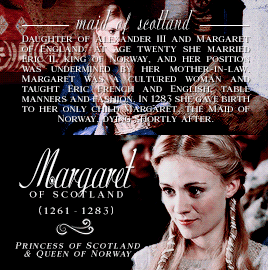



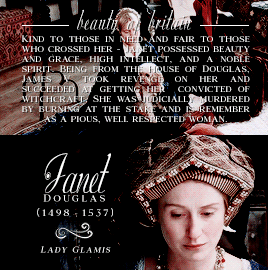
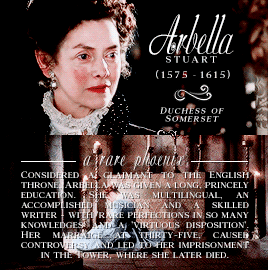


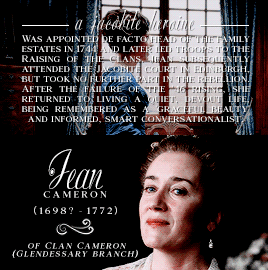













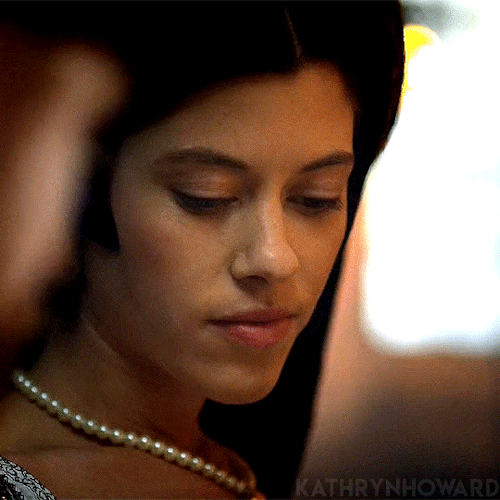








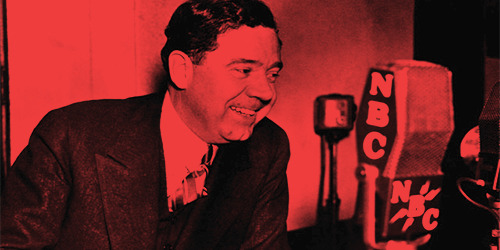



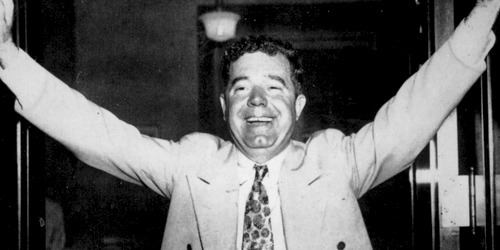
![HISTORY MEME: [2/9] KINGS/QUEENS: Anne BoleynAnne Boleyn (c. 1501 – 19 May 1536) was Queen of Englan HISTORY MEME: [2/9] KINGS/QUEENS: Anne BoleynAnne Boleyn (c. 1501 – 19 May 1536) was Queen of Englan](https://64.media.tumblr.com/9fc629c94d9b91e3cb929716dd11e5fa/tumblr_ohku44wB7g1shyzaio1_500.png)
![HISTORY MEME: [2/9] KINGS/QUEENS: Anne BoleynAnne Boleyn (c. 1501 – 19 May 1536) was Queen of Englan HISTORY MEME: [2/9] KINGS/QUEENS: Anne BoleynAnne Boleyn (c. 1501 – 19 May 1536) was Queen of Englan](https://64.media.tumblr.com/91ba4d5f11729f4eff8d783b24e91ced/tumblr_p93rbvIXRI1xpk6q3o6_500.jpg)
![HISTORY MEME: [1/9] KINGS/QUEENS: Cleopatra» Cleopatra VII Philopator (69 – August 12, 30 BC), known HISTORY MEME: [1/9] KINGS/QUEENS: Cleopatra» Cleopatra VII Philopator (69 – August 12, 30 BC), known](https://64.media.tumblr.com/6e4706897b798db3b6a415613e7c33ce/tumblr_ohjgrc8ift1shyzaio1_500.png)
![HISTORY MEME: [1/9] KINGS/QUEENS: Cleopatra» Cleopatra VII Philopator (69 – August 12, 30 BC), known HISTORY MEME: [1/9] KINGS/QUEENS: Cleopatra» Cleopatra VII Philopator (69 – August 12, 30 BC), known](https://64.media.tumblr.com/481e43f5a548efe82a14a0ba62a4a878/tumblr_n3ig9kVh0X1qltjtho1_500.jpg)
